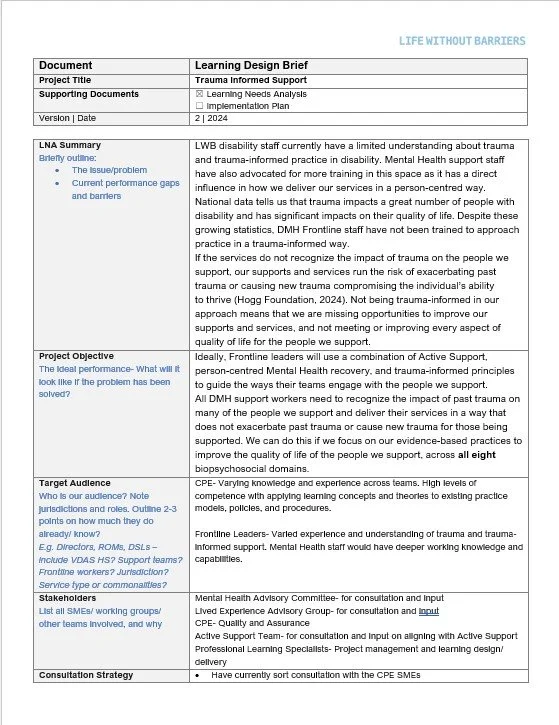Professional Learning Design Workflow
The BriefThis project started with our Professional Learning Team realised we needed a better way to plan and manage training programs. In the past, we did not have a consistent method for conducting learning needs analyses; co-designing and consultations with subject matter experts; or managing all the new and existing training projects in our portfolio.
Our manager noticed this led to some of our training solutions not fully meeting our workforce's needs. So, we needed a more organized and unified approach to our work processes and systems.
The SolutionTogether with the Professional Learning Manager, we created a comprehensive system and workflow for our team. This included crafting new tools like process maps, learning brief templates, implementation plans, and assessment tools, which are now standard for all our programs.
We also integrated various adult learning principles and models to ensure that our analyses, consultations, content design, development, and delivery align with the business's performance and learning goals.
The OutcomesStandardised models and tools used by all Professional Learning Specialists in conducting Learning Needs Analyses
Robust tools for facilitating co-design consultation with stakeholders and subject matter experts.
Consolidated approach in developing concise and measurable learning objectives for our training solutions. Adopting the Action Mapping, or backwards design thinking to our development process.
Streamlined processes and systems to project manage, coordinate and deliver our training.
A comprehensive evaluative tool based on Kirkpatrick’s Model of Evaluation, to gather and analyse learners’ and stakeholders’ feedback.
Created with Miro Boards and Microsoft Word
Learning Design Models adopted were Action Mapping, Backwards Learning Design, Universal Design for Learning, Kirkpatrick Model of Evaluation, and ADDIE
The Look & Feel

Co-Design Focus Groups for Learning Needs Analyses
Learning proposals and project management strategies
Action Mapping and constructive alignment of content to Learning Objectives
Learning Evaluation and Feedback Cycles




